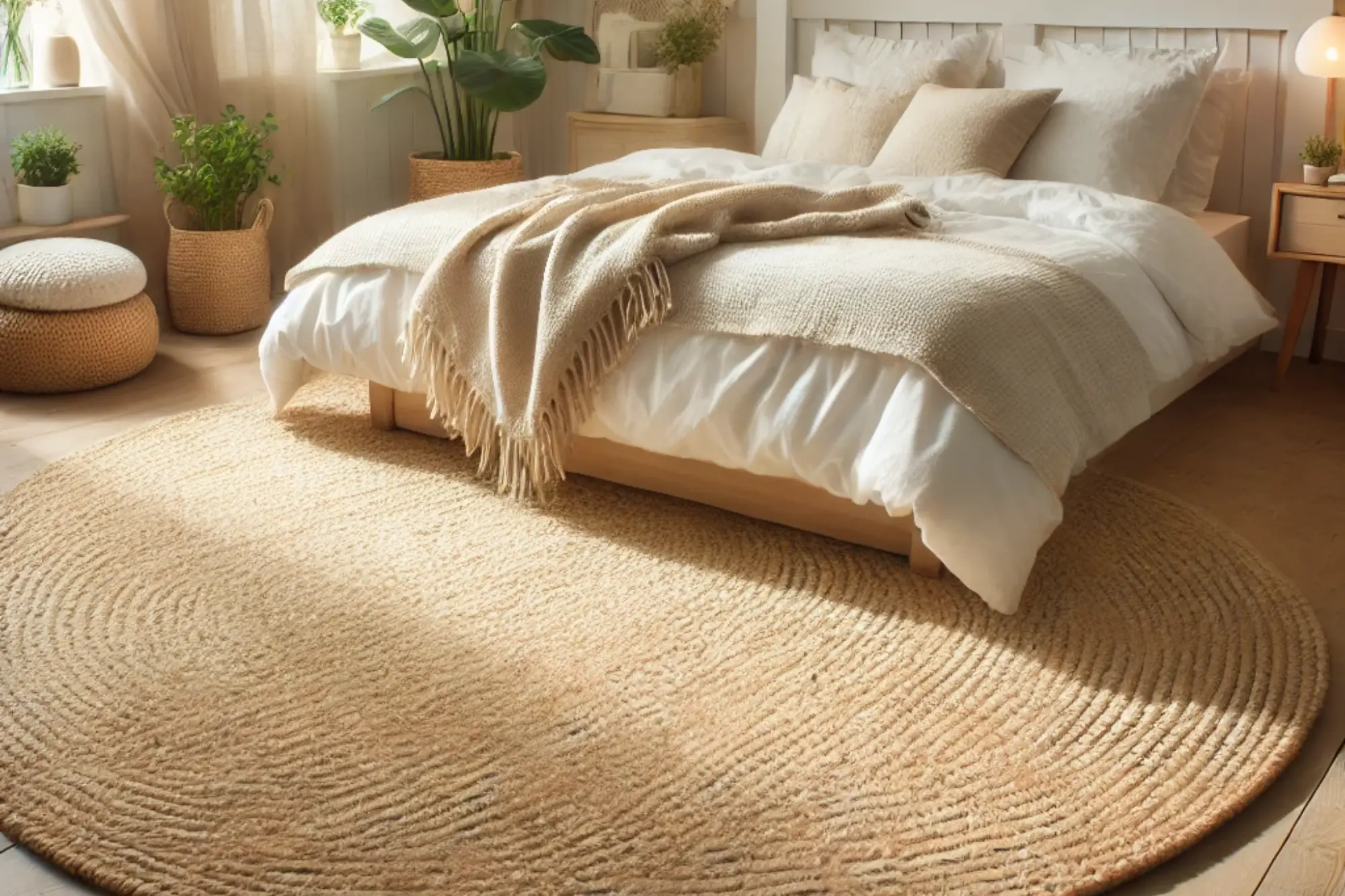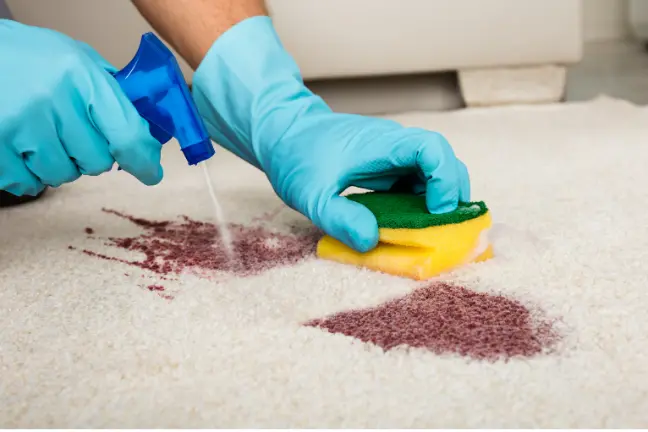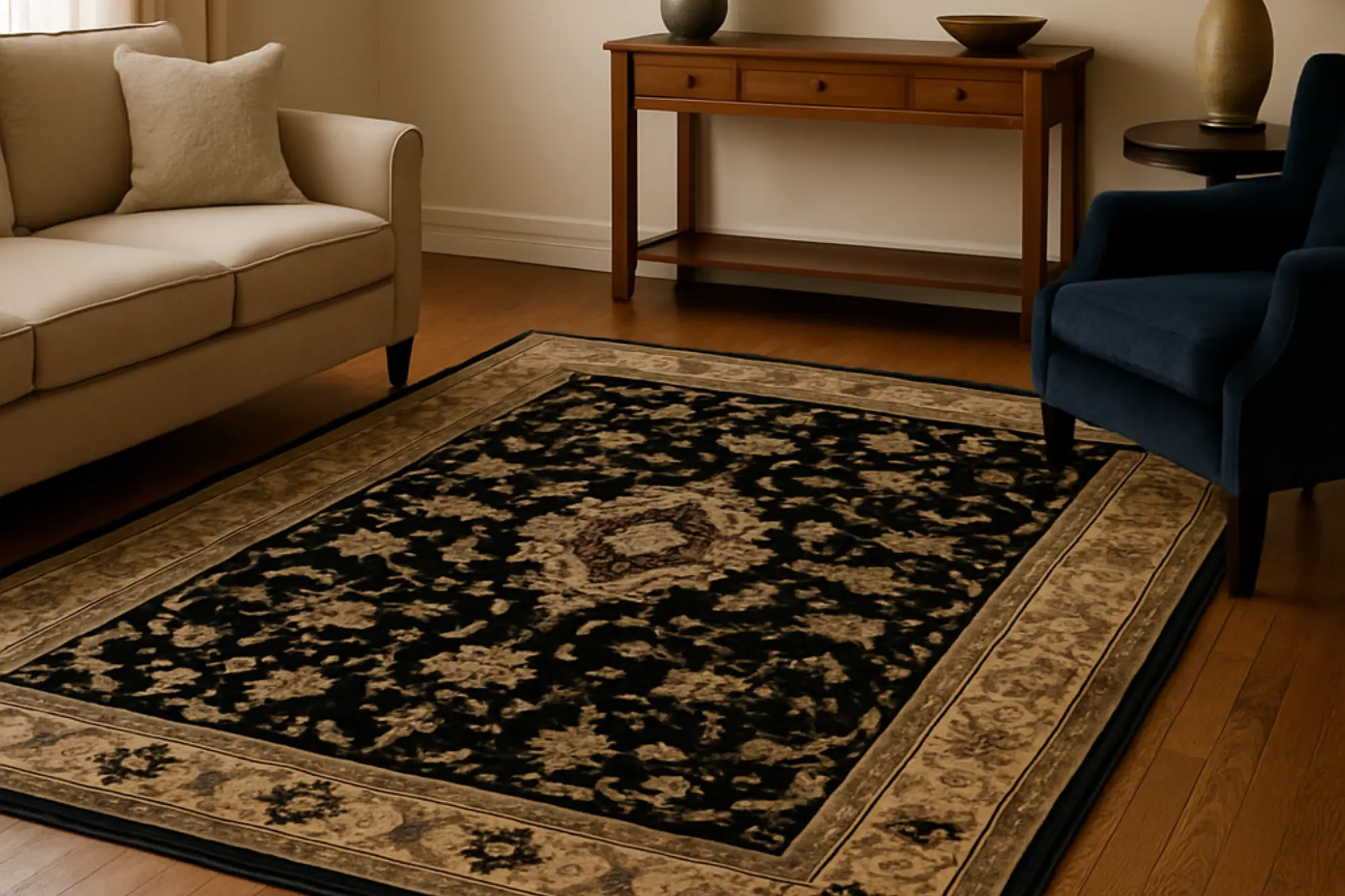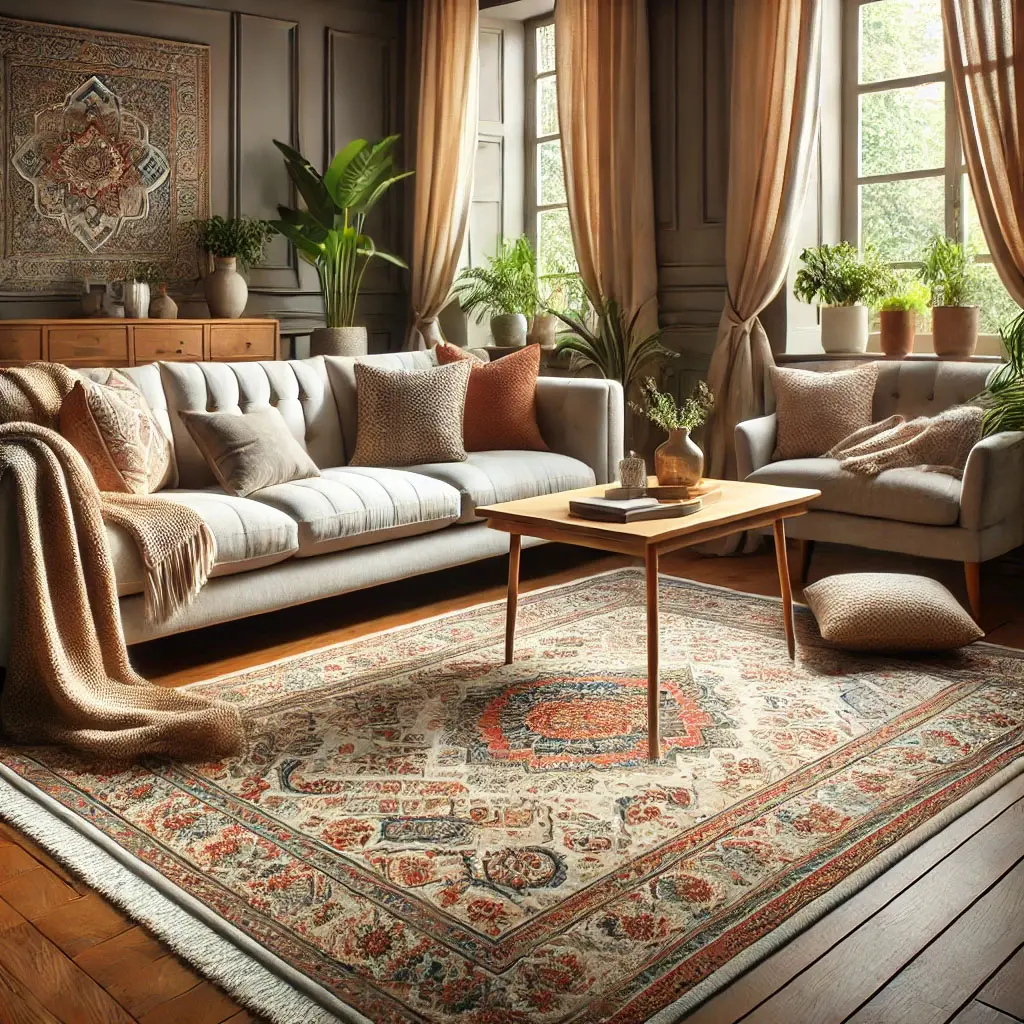The Renaissance of Artisan Rugs: Celebrating Hand-Woven Treasures in Contemporary Spaces
Table of Contents
- Introduction
- The Revival of Artisan Rugs in Modern Decor
- Understanding the Appeal of Hand-Woven Treasures
- The Art of Rug Weaving
- History and Heritage of Artisan Rug Weaving
- Traditional Techniques Meet Contemporary Design
- Materials Matter
- Natural Fibers: Wool, Silk, Cotton, and Beyond
- The Environmental Impact of Sustainable Materials
- Designs That Tell a Story
- Cultural Motifs and Symbolism in Rug Designs
- Personal Narratives: The Artisans Behind the Rugs
- Artisan Rugs in Contemporary Spaces
- Blending Tradition with Modern Aesthetics
- Case Studies: Transformative Spaces Enhanced by Artisan Rugs
- Investing in Artisan Rugs
- Artisan Rugs as Heirlooms and Investment Pieces
- The Value of Authenticity and Craftsmanship
- Conclusion
- The Enduring Allure of Hand-Woven Rugs in Modern Interiors
- Celebrating the Renaissance of Artisan Craftsmanship
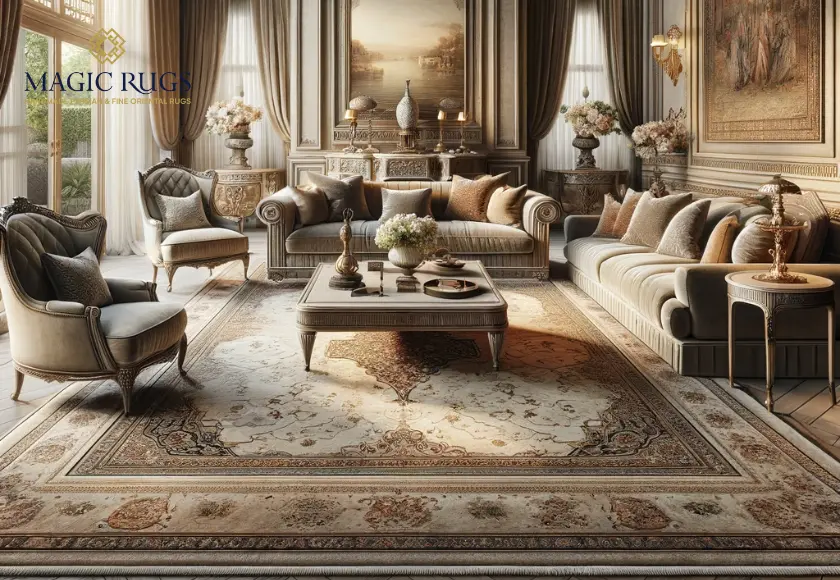
Introduction
The Revival of Artisan Rugs in Modern Decor
In recent years, the interior design landscape has witnessed a significant shift—a renaissance of artisan rugs, marking a return to authenticity, craftsmanship, and sustainability. This revival is not merely a trend but a profound appreciation for the artistry and cultural heritage that hand-woven rugs embody. Artisan rugs, with their intricate designs and rich histories, are finding their place in contemporary spaces, bridging the gap between traditional craftsmanship and modern aesthetics. The allure of these pieces lies in their ability to add depth, warmth, and a narrative to any room, making them more than just decor but a statement of values and style.
Understanding the Appeal of Hand-Woven Treasures
The appeal of hand-woven rugs extends far beyond their visual beauty. Each rug tells a story, woven into its fibers by skilled artisans who have inherited centuries-old techniques passed down through generations. These rugs carry the essence of their origin, encapsulating the traditions, stories, and lives of the people who make them. This connection to history and culture is increasingly sought after in a world leaning towards mass production and impersonality.
Moreover, the resurgence of artisan rugs in modern decor is closely tied to a growing consciousness about sustainability and ethical consumerism. Hand-woven rugs, often made from natural and sustainable materials, offer an eco-friendly alternative to their machine-made counterparts. They represent a choice that aligns with a more thoughtful approach to decorating our spaces—one that considers the environmental impact and supports fair trade and ethical practices.
As we delve into the world of artisan rugs, we explore not only the beauty these pieces bring to contemporary interiors but also the broader implications of choosing hand-woven treasures. This blog aims to uncover the layers of appeal that artisan rugs hold, highlighting their significance in modern decor and the values they represent. Join us as we celebrate the artistry, heritage, and revival of these magnificent hand-woven treasures in contemporary spaces.
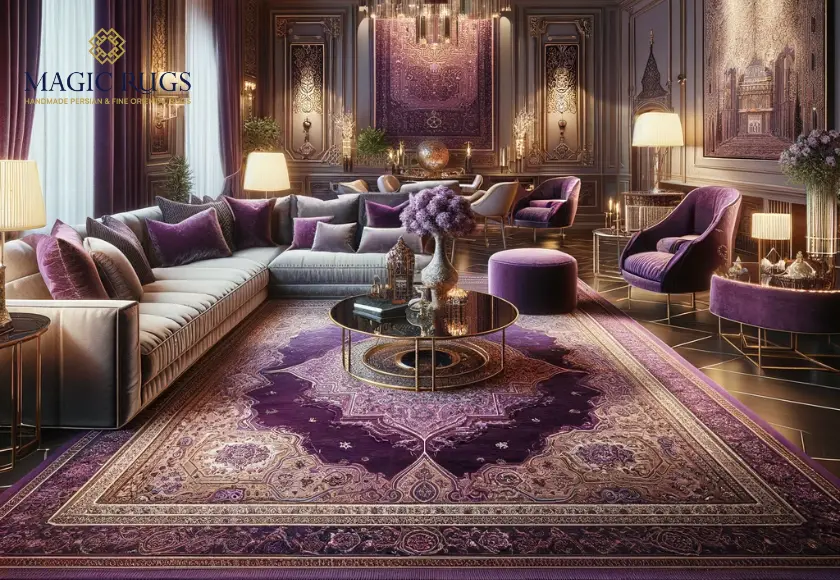
The Art of Rug Weaving
History and Heritage of Artisan Rug Weaving
The history of artisan rug weaving is as rich and diverse as the patterns that adorn these timeless pieces. Originating thousands of years ago, the craft of rug weaving is deeply embedded in the cultural heritage of various civilizations across the globe. From the ancient Pazyryk rug, believed to be the oldest surviving carpet, to the intricate Persian rugs that have come to define excellence in craftsmanship, each piece carries the legacy of its origins. These rugs were more than mere floor coverings; they were symbols of status, expressions of cultural identity, and artifacts of artistic endeavor.
Artisan rug weaving is characterized by its reliance on hand-operated tools, natural materials, and, most importantly, the skill and creativity of individual weavers. Communities in regions such as Persia (modern-day Iran), the Caucasus, Anatolia (Turkey), and Central Asia have honed their unique styles, techniques, and motifs, often passing them down through generations. The diversity of designs—from geometric patterns inspired by the natural landscape to elaborate narratives depicting historical events—speaks to the rich cultural tapestry from which these rugs emerge.
Traditional Techniques Meet Contemporary Design
In the modern era, the traditional techniques of rug weaving are experiencing a renaissance, as contemporary designers and artisans bridge the past and present. This fusion of traditional craftsmanship with modern aesthetics allows for a new expression of cultural heritage, making these rugs highly coveted in contemporary interior design.
Today's artisans are custodians of their ancestral techniques, yet they are also innovators, experimenting with colors, patterns, and materials to meet the evolving tastes of modern consumers. Natural dyes derived from plants and minerals are being rediscovered for their vibrant hues and environmental benefits, while traditional motifs are reimagined in new contexts, lending modern spaces a sense of depth and connection to history.
The meeting of traditional techniques and contemporary design in rug weaving represents a dialogue between the old and the new. It highlights the adaptability and enduring relevance of artisan rugs in today's design landscape. By incorporating these hand-woven treasures into contemporary spaces, we not only enhance the aesthetic appeal of our environments but also pay homage to the rich history and heritage of rug weaving. This celebration of artisan craftsmanship invites us to appreciate the beauty of hand-made creations and the stories they tell, anchoring modern decor in a tradition that spans millennia.

Materials Matter
Natural Fibers: Wool, Cotton, and Beyond
The choice of material plays a pivotal role in the art of rug weaving, not only influencing the texture, durability, and appearance of the final product but also its impact on the environment and health. Natural fibers such as wool, cotton, silk, and jute are the cornerstone of artisan rug making, celebrated for their inherent beauty, resilience, and sustainability.
Wool is perhaps the most traditional and widely used material in rug making. Prized for its durability, natural stain resistance, and rich texture, wool rugs offer warmth and depth to any space. The versatility of wool allows for a range of weaving techniques, from thick, plush piles to tightly woven flatweaves, making it a favorite among artisans and consumers alike.
Cotton offers a lighter alternative to wool, known for its softness and flexibility. Cotton fibers can be tightly woven to create crisp, detailed patterns, making them ideal for intricate designs. Rugs made from cotton are often more affordable and easier to clean than their wool counterparts, offering a practical option for high-traffic areas.
Beyond wool and cotton, other natural fibers like silk add a touch of luxury and sheen to rugs, while jute and sisal provide a rustic, earthy appeal. Each material brings its unique qualities to the weaving process, allowing artisans to craft rugs that are not only beautiful but also reflective of their natural origins.
The Environmental Impact of Sustainable Materials
The resurgence of interest in natural fibers within the rug industry is closely linked to growing concerns about sustainability and environmental impact. Natural fibers, being renewable resources, offer a more eco-friendly alternative to synthetic materials, which are often derived from petrochemicals and can take centuries to degrade.
Rugs made from natural fibers contribute to a healthier indoor environment by minimizing the emission of volatile organic compounds (VOCs) — a common issue with synthetic carpets. Furthermore, the production of natural fiber rugs often requires less energy and produces fewer pollutants than the manufacture of synthetic ones, reducing the carbon footprint associated with their creation.
Sustainable rug-making extends beyond the choice of fiber, encompassing the entire lifecycle of the product. Practices such as using organic dyes, minimizing waste, and ensuring fair labor conditions all contribute to the environmental and social responsibility of rug production. Consumers are increasingly seeking out rugs that not only enhance their homes aesthetically but also align with their values of environmental stewardship and ethical consumption.
As we continue to navigate the complexities of modern living, the materials we choose for our rugs offer a way to connect with the natural world and make conscious choices for our planet. By opting for rugs made from natural, sustainable fibers, we support traditional craftsmanship, promote healthier living environments, and contribute to the preservation of our environment for future generations.
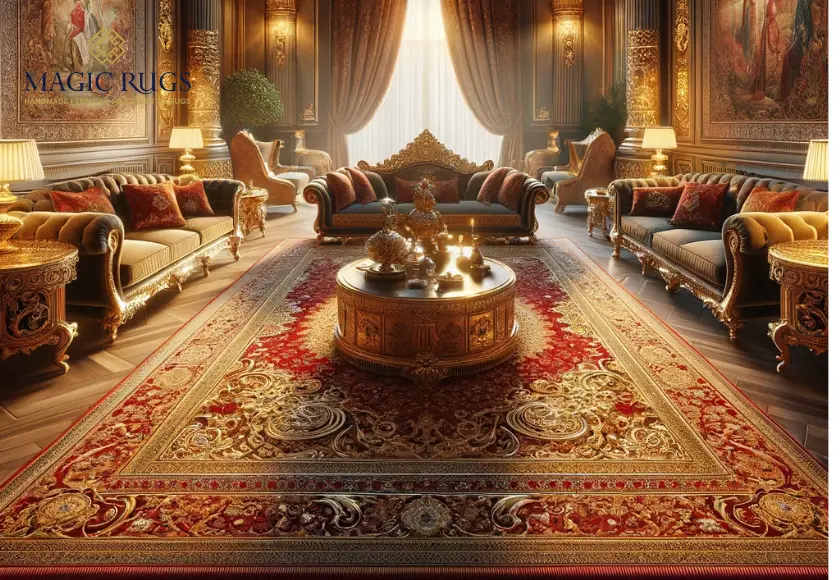
Designs That Tell a Story
Cultural Motifs and Symbolism in Rug Designs
Artisan rugs are more than just decorative items; they are canvases that carry the stories, beliefs, and traditions of their makers. The motifs and patterns woven into each rug are imbued with deep cultural significance, with every element symbolic of the community’s history, environment, and way of life. From the geometric patterns found in Caucasian rugs, representing the natural world and tribal identity, to the intricate floral designs of Persian carpets, symbolizing paradise and spiritual concepts, each design element is a testament to the rich tapestry of cultural heritage.
In many cultures, rug weaving is a narrative form, where ancient myths, important historical events, and everyday life are told through the loom. These motifs serve as a language, a way for weavers to express their identity, beliefs, and hopes. The Tree of Life, for example, a common motif in many rug-making traditions, symbolizes the connection between heaven and earth, growth, and eternal life. Similarly, water motifs may represent purification and life, while animals can symbolize protection, strength, or fertility.
Personal Narratives: The Artisans Behind the Rugs
Behind every hand-woven rug is an artisan with a unique story. The process of rug making is not merely a craft but a personal journey, where the weaver imparts a part of their life, experiences, and emotions into the fabric. These personal narratives add an invaluable layer of meaning to the rugs, making each piece a unique artifact of human expression.
Artisans often draw inspiration from their immediate surroundings, incorporating elements of their daily lives into their work. This personal touch turns each rug into a diary, a tangible record of the weaver’s existence at a point in time. For instance, a weaver might include symbols of good fortune or protection in anticipation of a joyful event or as a talisman against future hardships.
The revival of artisan rugs in contemporary spaces is a celebration of these personal and cultural narratives. By choosing a hand-woven rug, individuals not only add a piece of art to their homes but also participate in the preservation of storytelling traditions. It's an acknowledgment of the skill, time, and stories woven into the rug, providing a connection to the artisan who made it.
In today’s globalized world, where mass production often obscures the human element of craftsmanship, artisan rugs stand out as remnants of individual and cultural identity. They remind us of the beauty of human creativity and the importance of preserving traditional arts. As we bring these rugs into our homes, we not only enhance our living spaces but also keep the stories and traditions of distant cultures alive and relevant. Through these hand-woven treasures, we celebrate the diverse tapestry of humanity, one rug at a time.
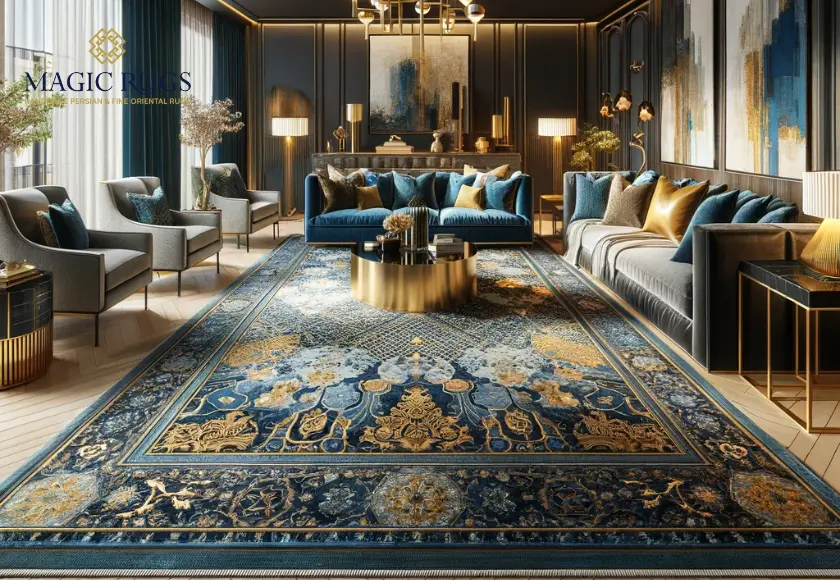
Investing in Artisan Rugs
The decision to invest in an artisan rug is an investment in beauty, history, and craftsmanship. These hand-woven masterpieces, steeped in tradition and cultural significance, offer more than just aesthetic appeal—they stand as potential heirlooms and valuable investment pieces. The true essence of investing in artisan rugs lies in appreciating the unparalleled authenticity and craftsmanship each piece brings to a space.
Artisan Rugs as Heirlooms and Investment Pieces
Artisan rugs are designed to last generations, their quality and beauty enduring through the years. Unlike mass-produced counterparts, these rugs gain character and value over time, making them perfect candidates for family heirlooms. The meticulous process of hand-weaving, combined with the use of high-quality natural materials, ensures that each rug is both durable and timeless. As these pieces are passed down, they carry with them stories and memories, deepening their emotional and monetary value.
The investment value of artisan rugs is also significant. Rare designs, historical pieces, and rugs made by renowned artisans can be appreciated over time, especially in a market that values unique and authentic works of art. Collectors and enthusiasts often seek out specific styles or origins, making certain rugs highly sought after and valuable.
The Value of Authenticity and Craftsmanship
Authenticity in artisan rugs is evident in the unique imperfections and variations that come from handcrafted processes. These characteristics are not flaws but rather signatures of the artisan's work, distinguishing each piece as a one-of-a-kind creation. The value of this authenticity cannot be overstated; it represents a connection to the human aspect of art, a reminder of the skill, time, and tradition woven into each rug.
The craftsmanship of artisan rugs reflects a mastery of techniques passed down through generations. From the spinning of the yarn to the dyeing process and the final weaving, each step is carried out with precision and care. This dedication to craftsmanship ensures not only the beauty of the rug but also its durability and functionality as a piece of home decor.
Investing in artisan rugs means supporting a legacy of craftsmanship while adding a layer of sophistication and warmth to your home. It's an acknowledgment of the cultural and artistic value these pieces hold. As we select artisan rugs for our spaces, we not only enhance our immediate environment but also invest in the preservation of global artisanal traditions.
In a world where fast fashion and disposable decor are prevalent, choosing to invest in an artisan rug is a statement of commitment to quality, sustainability, and the timeless beauty of handcrafted art. Whether as a focal point in a room or a cherished heirloom, an artisan rug is a testament to the enduring appeal of authenticity and craftsmanship in our homes and lives.
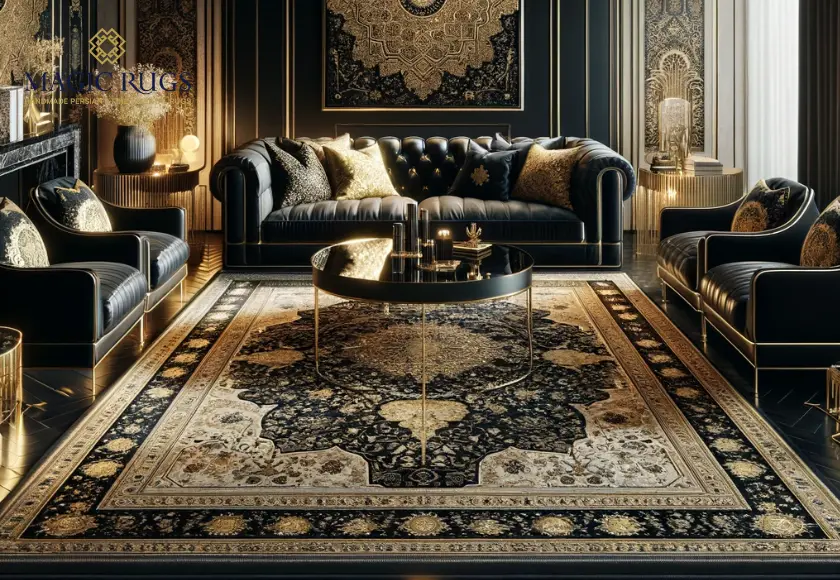
Conclusion
The exploration of artisan rugs and their integration into modern interiors reveals a profound appreciation for the enduring allure of hand-woven treasures. These pieces are not mere accessories but pivotal elements that bridge the past and present, traditional craftsmanship and contemporary design. The renaissance of artisan craftsmanship in the context of modern decor underscores a collective yearning for authenticity, quality, and sustainability in our living spaces.
The Enduring Allure of Hand-Woven Rugs in Modern Interiors
Artisan rugs carry with them an intrinsic value that transcends aesthetic appeal. They imbue modern interiors with warmth, texture, and a narrative depth that mass-produced items simply cannot replicate. The unique imperfections and rich, cultural motifs of hand-woven rugs add layers of character and history to contemporary spaces, making them feel more lived-in and connected to the wider world.
The integration of these artisanal pieces into modern design schemes reflects a broader trend toward mindful consumption and a deeper respect for the artistry and tradition behind the objects we choose to surround ourselves with. As we gravitate towards more sustainable and ethically produced goods, artisan rugs stand out as exemplars of how traditional practices can be preserved and celebrated in the modern age.
Celebrating the Renaissance of Artisan Craftsmanship
This renewed interest in hand-woven rugs and artisan craftsmanship marks a significant shift in the interior design landscape. It is a celebration of the human touch in an increasingly digital and automated world—a reminder of the value of handiwork, the beauty of imperfection, and the importance of cultural preservation.
Supporting artisan rug makers not only enriches our homes but also contributes to the sustainability of traditional crafts and the communities that depend on them. It fosters a global appreciation for the diverse tapestry of cultures and histories that these rugs represent, connecting us to stories and skills that span centuries and continents.
As we conclude, let us recognize that choosing an artisan rug is a choice to invest in beauty, history, and sustainability. It is a commitment to elevating our living spaces with pieces that carry meaning, tell stories, and stand the test of time. The renaissance of artisan craftsmanship in our homes is more than a trend—it's a movement towards more thoughtful, intentional living, where every piece we select holds a world of stories, waiting to be woven into the fabric of our lives.
Explore more trending collections!
Share:

